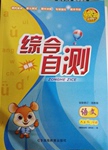题目内容
Her pronunciation is as good as, if ____than, her teacher's.?
A. no better B. not better C. no good D. not good?
B

练习册系列答案
 综合自测系列答案
综合自测系列答案
相关题目
题目内容
Her pronunciation is as good as, if ____than, her teacher's.?
A. no better B. not better C. no good D. not good?
B

 综合自测系列答案
综合自测系列答案